Thankes Park Sewage Pumping Station (2023)
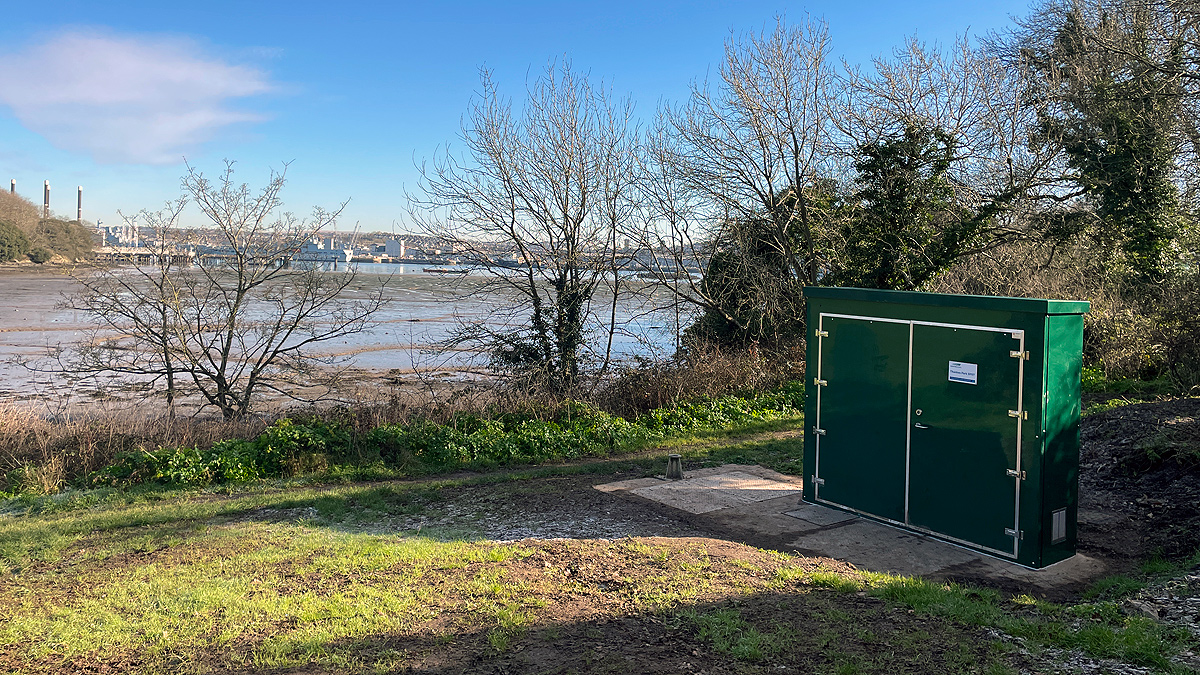
Completed works showing new kiosk and panel in the park - Courtesy of Galliford Try
South West Water’s Thankes Park Sewage Pumping Station (SPS) is situated in a housing estate, close to Thankes Lake along the River Tamar in a busy public park with extremely limited access. The park has been undergoing renovation and development by locals who upkeep the maintenance to stimulate interest in its historic and heritage value through a variety of events and activities. The current control panel and kiosk were non-compliant and needed upgrading with a new security rated kiosk, as well as a TS 418 compliant control panel with HMI and instrumentation.
Preferred solution
It was necessary for the pumping station to be maintained fully operational throughout the duration of the works. The most viable option for this upgrade was to install temporary power and control, pump starters, and ultrasonic level control, utilising existing pumps and pipework, as opposed to tankering all incoming flows off-site, or over-pumping for the duration of the works, which would not have been practical.
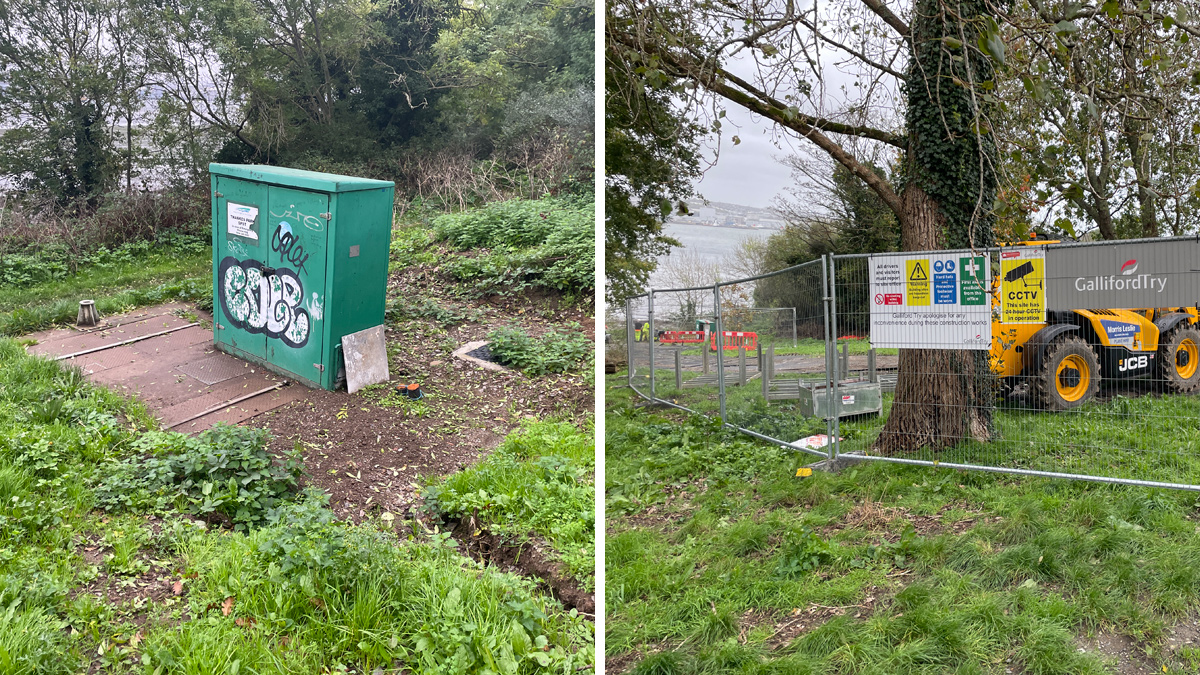
(left) Old panel and pumping station in park and (right) site set up in the park showing the hill and works at the bottom by the river – Courtesy of Galliford Try
Shutdown and risks involved
Process risk assessments were carried out and measures were put in place to prevent non-compliant spills of sewage to the environment. This was discussed at length and agreed with the client before commencing the works with contingency measures in place should Galliford Try encounter any unforeseen issues or extreme weather events. Risks involved included:
- Power supply: Turning it off and on.
- The public: Communal location.
- Potential park damage: As a result of Galliford Try’s activities.
- Environmental considerations: Proximity to the river.
- Shutdown of the pumping station: Required for eight hours.
The new control panel and telemetry outstation were both pre-commissioned off-site via radio link, to save time on the shutdown. Complete site electrical power isolation was arranged with the National Grid to allow the old kiosk and metering equipment to be removed and additional control measures put in place. Generator power, pump supplies and controls were installed and tested before use for their reliability. A standby generator and additional fuel were kept nearby, as well as a support tanker.
If the temporary power and control did fail, it was arranged for a new generator response within one hour and a tankering system planned (one tanker to suck (the distance) and then off-load into another tanker to take to site while they filled another; three tankers in total).
To mitigate the risk of the new panel failing when powered up, temporary power and control was first tested off site as once the pump station power supply was turned off, there was no going back. Deliveries also had to be carefully planned and managed (i.e. only one HIAB artic delivery being the new kiosk) as the only access was through the small village via a housing estate. All other deliveries had to happen via vans and tippers.
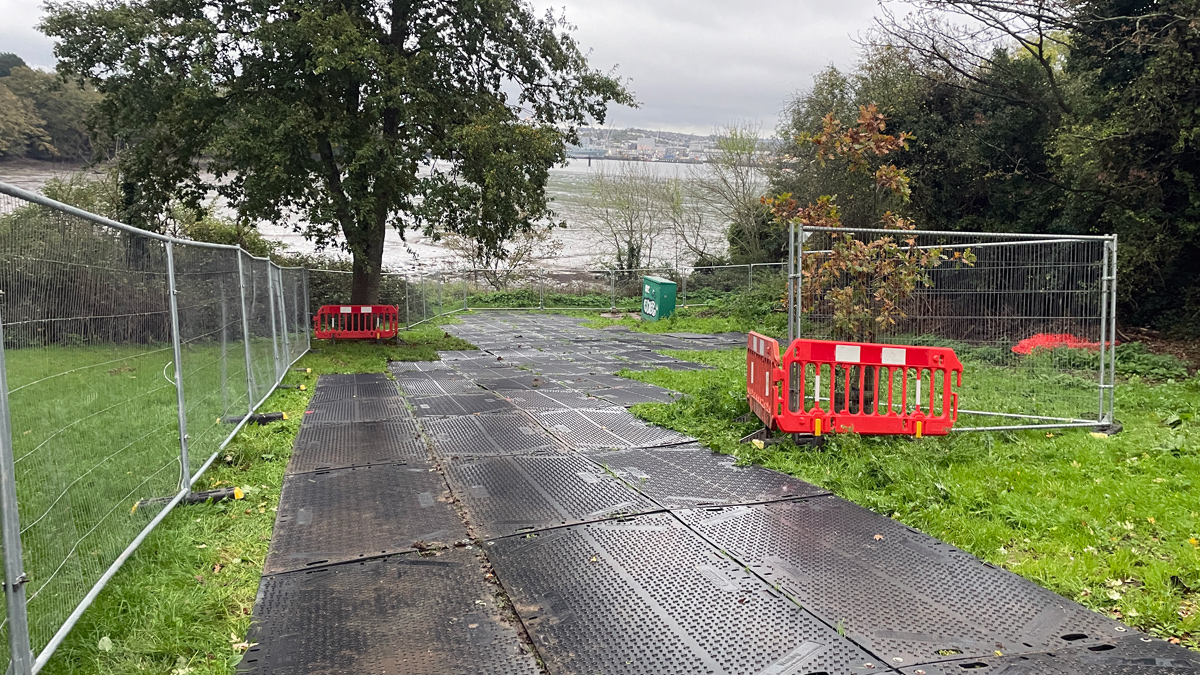
Site set up with ground protection – Courtesy of Galliford Try
Thankes Park SPS: Supply chain – key participants
- Client: South West Water
- Design/construct: Galliford Try
- Pumps: Pump Supplies Ltd
- Instrumentation: Siemens
- Electronic items: IFM Electronic
- Electrical items: RS Components Ltd
- Electrical items: Western Electrical
- Electrical items: Edmundson Electrical Ltd
- Mechanical items: Teignflex Ltd
- Mechanical items: Kernow Fixings
- Safety specialists: Ash Safety
- Temporary power supply: Ellis Electrical Ltd
- Plant hire: Gap Group Ltd
- Plant hire: Morris Leslie Plant Hire Ltd
Constraints and challenges
The pumping station site was just 4m away from Thankes Lake; therefore response time if anything should got wrong was a potential issue. Depending on flow rates, the wet well had approximately 20-40 minutes of reaction time should anything happen before it would spill into the river and surrounding environment.
Due to this, all plant required separate parking, as far away as possible from the river, and all had to be operated by bio-oil with spill kits and drip trays (bio-oil is sustainable, renewable, and most importantly, environmentally-friendly). A self-bunding generator and spill kits were sourced and the site induction included a tailored spill response plan, along with complete planning of the pumping station shutdown with fail-safes if issues should arise.
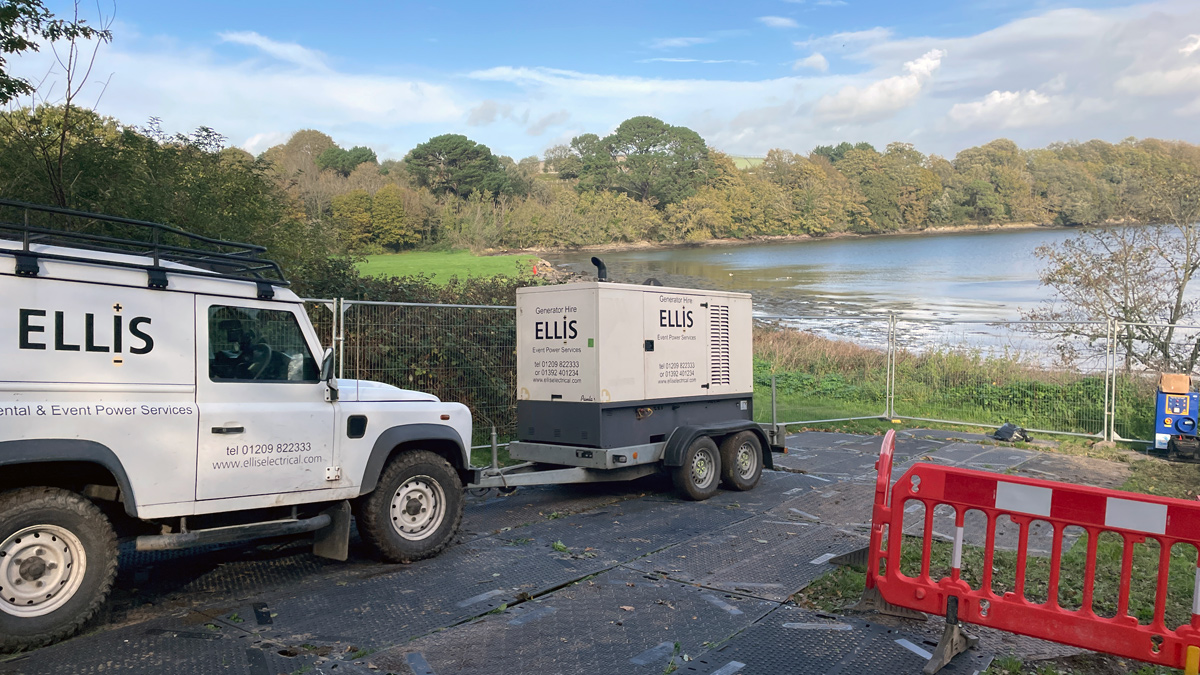
Generator delivery – Courtesy of Galliford Try
A further challenge was that the site was on a grassy, muddy slope, with limited entry. Galliford Try had to consider access for both staff and plant, so a temporary bog matt flooring system was installed which provided stable ground protection. To limit tracking up and down the site, plant movement was restricted to essential only and on shutdown day, only essential staff were given access to site.
As this work was carried out in the winter months, staff welfare was a priority, but with limited access, was a challenge. Galliford Try chose a self-contained 12ft ECO welfare unit, complete with canteen and drying room, which was the smallest option available for this site.
Community engagement
As the pumping station was in a public park, Galliford Try contacted residents and local businesses in advance to notify them of the planned works and timescales by way of letters and installing notice boards. For the public’s safety, site setup and demobilisation had to be planned; a complete HERAs fence compound with secure access gates was erected around the work area for security to limit danger to both the public and animals from entering the working area.
Car and van parking also had to be planned; the nearby school car park was utilised by all working on site and site traffic was arranged to avoid school times each day. All site waste was transported to the nearby Galliford Try Plymouth office for a one time disposal instead of having a skip on site which also removed the risk of rubbish waste blowing around the park or into the river.
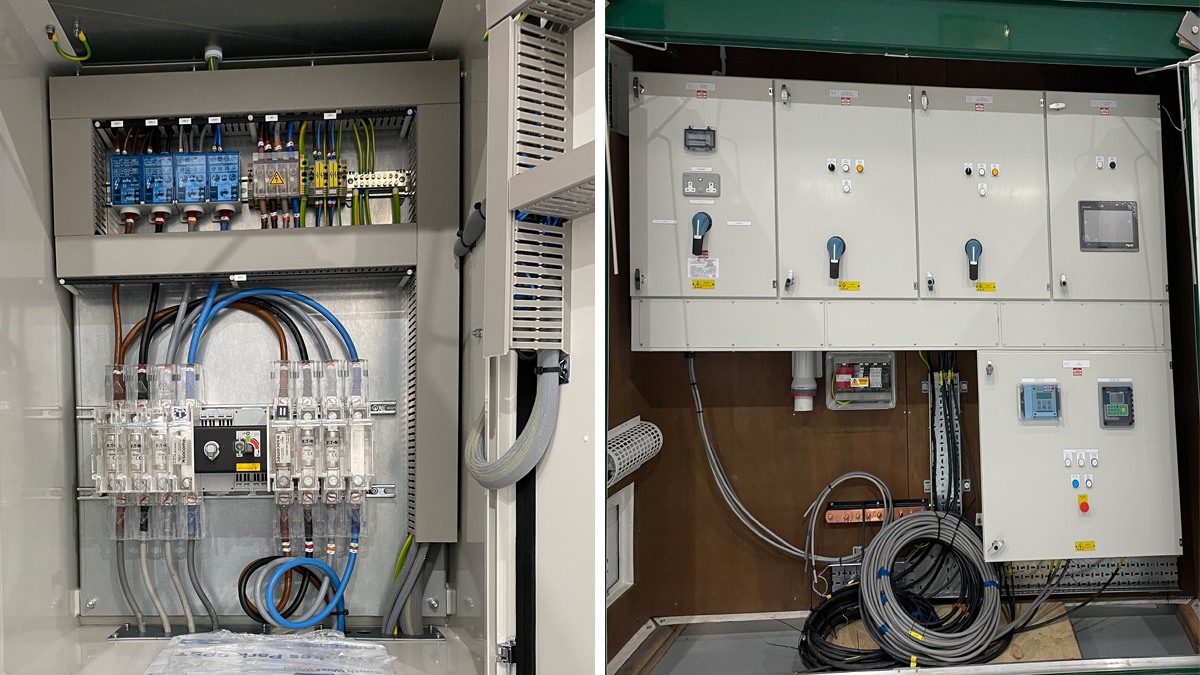
(left) Inside the new panel after testing and (right) the new panel off-site build and testing – Courtesy of Galliford Try
Summary
At the time of writing (March 2023) the new upgraded pumping station is now up and running and has remained operational throughout construction, with no environmental incidents. The local community were very supportive, upholding good relationships for future work in the area. The site has now returned to a no footprint condition following completion of the works and Galliford Try have also re-seeded and replaced all topsoil in the park.




